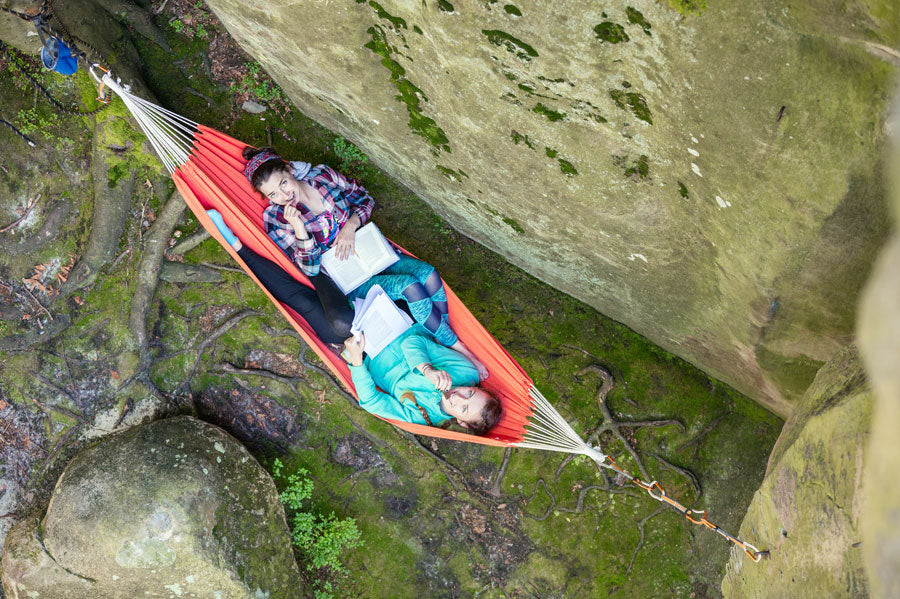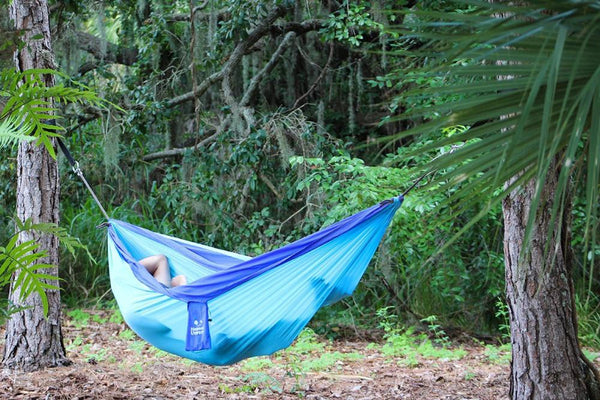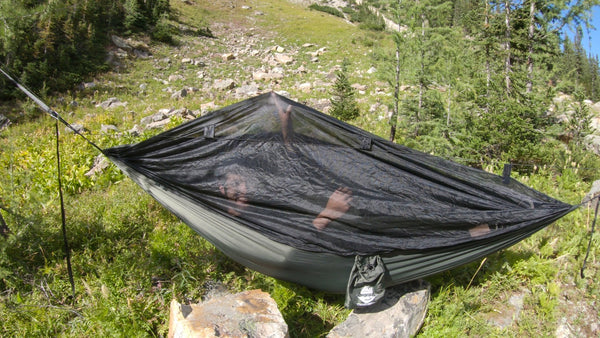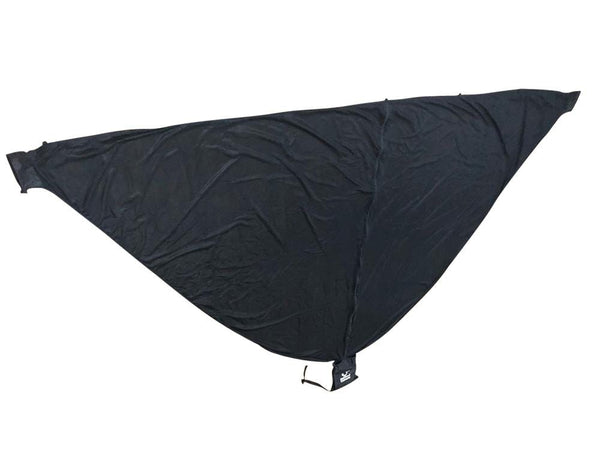FREE SHIPPING on most orders $25+ HAMMOCK BUYING GUIDE
Menu
-
-
Hammocks
-
Hammock Stands
-
Hammocks with Stands
-
Hanging Hammock Chairs
- View all Hammock Chairs
- Brazilian Style Hammock Chairs
- Colombian Hammock Chairs
- Mayan Hammock Chairs
- Mayan Hammock Chairs Deluxe
- Universal Hammock Chair Stand
- U Hammock Chair Stand
- Brazilian Hammock Chair with Universal Chair Stand
- Colombian Hammock Chair with Universal Chair Stand
- Mayan Hammock Chair with Universal Chair Stand
- Mayan Hammock Chair Deluxe with Universal Stand
-
Accessories
- Gift Cards
- Tools and Guides
- Bargain Bin
-
- 1-800-207-4761
- Login

FREE SHIPPING on most orders $25+ HAMMOCK BUYING GUIDE
Rock Climbing and Hammocks – A Match Made in Heaven
September 20, 2018 7 min read

Why Vertical Camping Is a Perfect Pastime for Hammock Lovers
The only thing that can make rock climbing better is being able to take a break and hang on the side of a cliff in your favourite hammock. Also known as cliff-hanging, vertical camping, and extreme cliff camping, hammock camping on a cliff is one exhilarating (and inversely, quite relaxing) adventure.
With so many places to climb all around the country, this hobby is extremely accessible with the right equipment, skill, and attitude. Rock climbing experts can take their climb to the next level, combining their passion for rock climbing with a rewarding hang in a hammock and a spectacular view.
Here’s a look at the different types of rock climbing, the essential gear, and how to make the most of hammock camping on the side of a cliff.
Types of Climbing
Climbing in all its forms is an exhilarating experience that combines exercise, fresh air, and the beauty of nature. There are various types of climbing, and climbers usually work their way up from indoor climbing gyms to climbing actual cliffs in the great outdoors.
Sport
Sport climbing is relatively safe and easy. It’s similar to indoor rock climbing as it relies on fixed anchors for stability and protection. Climbers attach their quickdraws to fixed anchors (or bolts). Quickdraws keep the rope away from the wall. Keep in mind that sport climbing routes are much more difficult than indoor wall climbing.
Traditional
Also known as “trad” climbing, traditional climbing is the original type of rock climbing. It requires climbers to place removable protection into the rock as they climb. Traditional climbing requires both mental and physical endurance and a deep understanding of anchors, passive and active protection, and other methods of protection.
Bouldering
Unlike the first two types of rock climbing, bouldering doesn’t rely on anchors for protection. Instead, the protection is usually a crash pad or a person spotting to make sure the climber doesn’t fall on their head.
Bouldering climbers use only the rock formations to climb. It is physically and mentally demanding and requires great mental focus and physical agility to safely get from one rock to the next.
Free Soloing
Free soloing is the most extreme type of rock climbing and shouldn’t be attempted by new climbers. With free soloing, climbers don’t use any protection—no anchors, spotters, or crash pads. Nadda. Only professional climbers will attempt this type of climbing. Experienced climbers who learn to free solo may first start with deep-water soloing—free soloing above deep water.
It takes years of experience to acquire the skills to safely free solo. Beginner climbers should start with indoor climbing and work their way up to sport and trad climbing before attempting to climb without protection.
The same goes for hammock camping and rock climbing. Only expert climbers who have hammock hanging skills should go rock climbing and hang from a cliff in their hammocks.
Essential Gear
Before embarking on an extreme adventure like rock climbing and vertical camping, climbers must have all the essential gear, and make sure it’s in perfect condition.
Harness
The harness is what keeps climbers attached to the rope. Whether you’re indoor climbing or trad climbing, you need a harness for protection.
Locking Carabiners
Locking carabiners have a screw lock so they remain closed and secure at all times. These are used to attach the belay device to the harness.
Belay Device
This device helps your partners keep you tightly and securely attached to the rope so you won’t fall much or at all. A belay device is either a tubular braking device or a Gri-gri assisted braking device.
Helmet
Climbers must always protect their heads from falling rocks, loose equipment, and accidental falls. So when climbing, always wear a helmet.
Rope & Protection
Climbers need to provide their own rope when climbing outside. And depending on the type of climbing—i.e. trad climbing—they will also need to build their own anchor protection. But if you go sport climbing, the anchors should already be in place.
You should also always go climbing with a partner for added safety and protection.
Hammock & Hammock-Hanging Gear
Lastly, you can’t forget your favourite camping hammock and hammock hanging gear. Camping hammocks are lightweight, durable, and easy to pack, making them a breeze to carry with you as you climb. And they provide a comfortable place to sleep or hang without having rocks dig into your back.
To hang your hammock between rocks, you’ll need a ridgeline cord, rope, three carabiners, climbing cams and climbing nuts—metal wedges threaded on a wire and wedged into the crack of rocks for protection.
How to Hang A Hammock on A Side of A Cliff
When there are no trees around and only rock, you can hang your hammock using your rock climbing gear, including various sized cams and nuts.
Before securing a ridgeline, find a good spot to hang your hammock. Look for solid rocks. Do not hang your hammock from flaky or unstable rocks.
You will want to find two anchor points to securely hang a ridgeline cord. But make sure there are no loose rocks above that could injure you while hanging in your hammock.
Preferably, you will find a landing that provides ample space for a camping spot, allowing you to walk around safely.
Step 1: Secure One End of the Cord to a Rock
Look for deep enough cracks underneath rocks, preferably one large rock on top of another. Stick the nut in the crack and attach a carabiner to the loop end of the nut hanging out of the rock.

Image source: David J. Fred
Tie a knot into the end of the cord you will be using for your hammock’s ridgeline suspension. Fold the end of a cord together to create a loop at one end. Tie that loop into a knot with the rest of the cord so there is still a small loop left on one end. Hook the small loop into the carabiner that is attached to the nut in the rock.
If you prefer, you can tie a full hitch knot instead.
Step 2: Secure the Other End of the Cord to a Rock
Extend the cord to the other anchor point so it is taught and sturdy. At this other end, securely attach a cam into a space in the rocks. Pull on its loop to ensure it is securely in place. Then attach a carabiner and tie a full hitch not, securing it to the carabiner.
This creates a secure ridgeline cord.
Step 3: Hang One End of Your Hammock
Now that you have a sturdy ridgeline secured between two rock anchor points, you can hang your hammock.
Attach one end loop of your hammock to the first carabiner from step one.
Step 4: Hang the Other End
Find the point on the ridgeline where you want to hang the other end of your hammock. This should be close to the length of your hammock. At this point, securely tie a smaller rope to create a prussic knot and a loop that hangs down from the ridgeline.
This smaller rope allows you to hang your hammock with some slack for a safe and comfortable hang. Attach a carabiner to this rope’s loop, and then attach the hammock loop to the carabiner.
Ideally, your hammock suspension should hang at a 30-degree angle on each end and your hammock should be low enough to the ground so you can comfortably sit in your hammock. Or, if there is no ground below you, it should be close enough to a ledge to easily enter and exit the hammock.
Safety Tips
The rule with hanging in a hammock is simple: Never install your hammock higher than you are willing to fall.
But for all you seasoned adventure junkies, rules aren’t typically followed, are they? That being said, even if you’re the world’s best rock climber and you’ve owned your hammock for years and know how to climb and set up with your eyes closed – you still need to heavily emphasize safety and precaution when rock climbing and hanging in your hammock on the side of a cliff.
Never hang a hammock from an unsafe height without a backup plan and always attach your harness to the secure ridgeline cord while hanging in your hammock on a cliff.
The Rush and Excitement of Hammocking While Rock Climbing
Whether you decide to camp out, or just go climbing for a day, bring your hammock along to make your climbing adventure that much better.
More Enjoyment Out Of Your Breaks
Nothing is more relaxing than hanging in a hammock. So instead of standing around or sitting on sharp rocks while taking breaks between climbs, you can set up your hammock and truly give your body a break. Hammocks relieve pressure from your body, allowing your joints, muscles, and mind to rest during breaks from climbing.
More Comfort While Waiting Around
Instead of looking up and craning your neck to watch your friends climb, you can lay back in your hammock and spectate comfortably.
Escape the Heat
Rocks can get too hot to touch in the middle of the day. When this happens, you can take a break in the shade and hang in your hammock. You won’t have to worry about sitting on hot rocks and you can enjoy the breeze with a well-deserved break.
Unique Climbing Experience
Rock climbing is an exhilarating experience that offers climbers a spectacular view of the world around them and a peaceful retreat in nature. But rock climbing is also physically and mentally demanding, requiring a lot of focus, strategy, agility, and strength.
After exerting yourself with rock climbing, the best way to enjoy this experience is by resting in a hammock for a while on the side of a cliff, soaking in the breathtaking views and spectacles of nature.
Safety First!
When using a hammock*, safety is paramount. Please make sure to follow these important guidelines when purchasing, installing and using a hammock
*(includes Hammock, Hammock Chair, Hammock Stand and Hammock Accessories)
Safety First!
When using a hammock*, safety is paramount. Please make sure to follow these important guidelines when purchasing, installing and using a hammock
*(includes Hammock, Hammock Chair, Hammock Stand and Hammock Accessories)
Related Products
Want to relax?
Join for exclusive content and promotions we only give to our email list!





